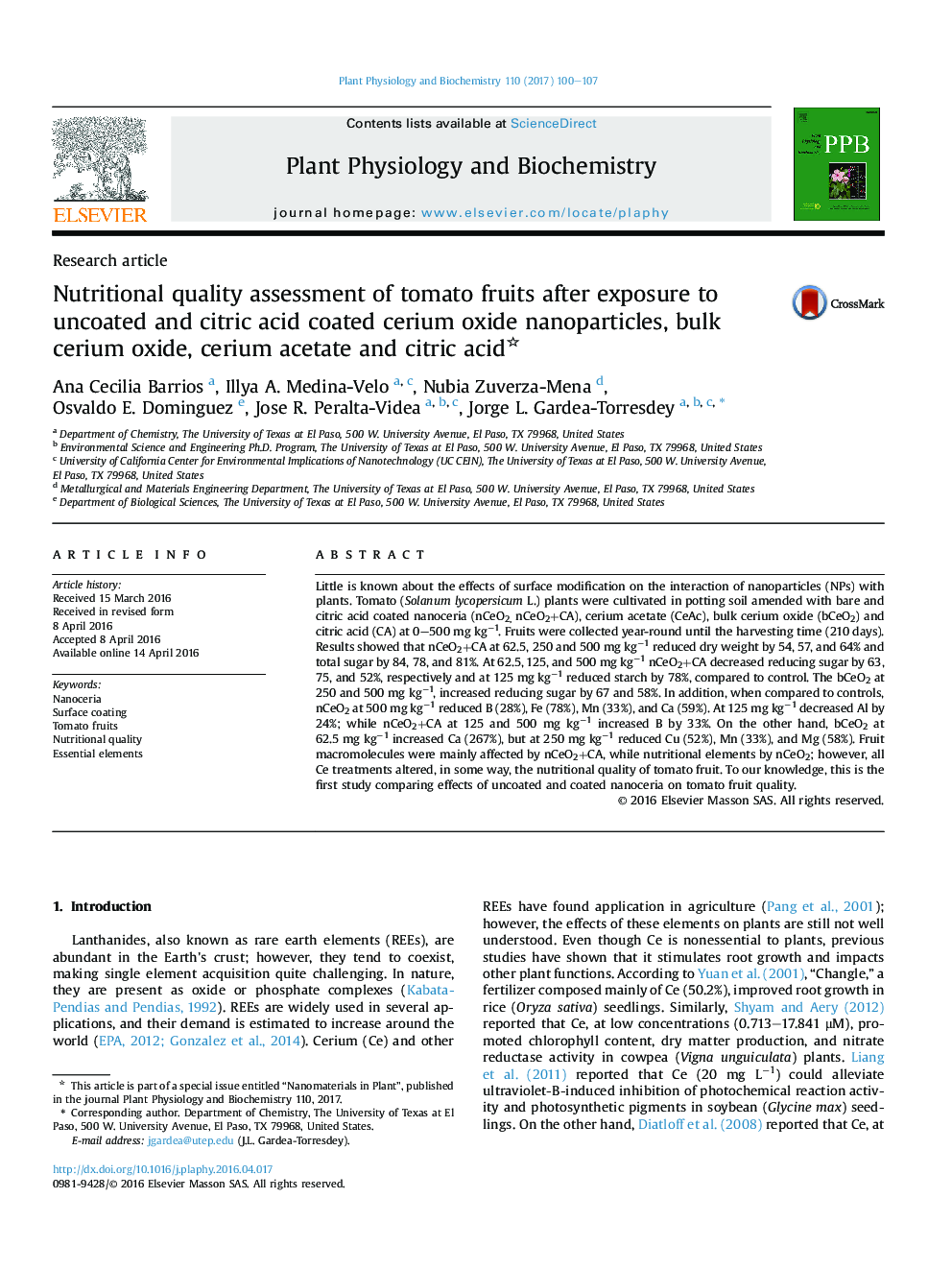| Article ID | Journal | Published Year | Pages | File Type |
|---|---|---|---|---|
| 5515331 | Plant Physiology and Biochemistry | 2017 | 8 Pages |
•At 500 mg kg−1, nCeO2 decreased B, Ca, Mg, and Mn.•nCeO2 + CA increased B, decreased d wt, total and reducing sugars.•bCeO2 decreased Mg and Mn but increased reducing sugars.•At all concentrations, bCeO2 and CeAc reduced lycopene.
Little is known about the effects of surface modification on the interaction of nanoparticles (NPs) with plants. Tomato (Solanum lycopersicum L.) plants were cultivated in potting soil amended with bare and citric acid coated nanoceria (nCeO2, nCeO2+CA), cerium acetate (CeAc), bulk cerium oxide (bCeO2) and citric acid (CA) at 0–500 mg kg−1. Fruits were collected year-round until the harvesting time (210 days). Results showed that nCeO2+CA at 62.5, 250 and 500 mg kg−1 reduced dry weight by 54, 57, and 64% and total sugar by 84, 78, and 81%. At 62.5, 125, and 500 mg kg−1 nCeO2+CA decreased reducing sugar by 63, 75, and 52%, respectively and at 125 mg kg−1 reduced starch by 78%, compared to control. The bCeO2 at 250 and 500 mg kg−1, increased reducing sugar by 67 and 58%. In addition, when compared to controls, nCeO2 at 500 mg kg−1 reduced B (28%), Fe (78%), Mn (33%), and Ca (59%). At 125 mg kg−1 decreased Al by 24%; while nCeO2+CA at 125 and 500 mg kg−1 increased B by 33%. On the other hand, bCeO2 at 62.5 mg kg−1 increased Ca (267%), but at 250 mg kg−1 reduced Cu (52%), Mn (33%), and Mg (58%). Fruit macromolecules were mainly affected by nCeO2+CA, while nutritional elements by nCeO2; however, all Ce treatments altered, in some way, the nutritional quality of tomato fruit. To our knowledge, this is the first study comparing effects of uncoated and coated nanoceria on tomato fruit quality.
Graphical abstractFigure optionsDownload full-size imageDownload high-quality image (199 K)Download as PowerPoint slide
